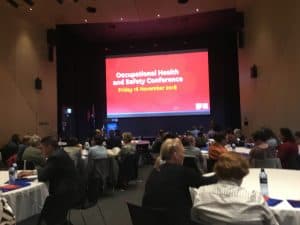 Every industry sector should have its own occupational health and safety (OHS) conference. This allows for specific OHS topics to be presented but also provides for a broader context. The recent conference conducted by the Victorian Branch of the Australian Nursing and Midwifery Federation (ANMF) was a great example.
Every industry sector should have its own occupational health and safety (OHS) conference. This allows for specific OHS topics to be presented but also provides for a broader context. The recent conference conducted by the Victorian Branch of the Australian Nursing and Midwifery Federation (ANMF) was a great example.
So close to a State election and in the lead-up to a Federal election it was not surprising that the trade union movement’s Change The Rules campaign gained attention, as did the push for the introduction of Industrial Manslaughter laws, in the presentation by Dr Paul Sutton.
The main points of his presentation are familiar and have been reported on previously but this presentation included news about two exemptions to the laws which may raise uncomfortable questions.

 It is difficult to make a book about occupational health and safety (OHS) law interesting. Some try with creative design but the most successful is when laws are interpreted into real world circumstances. Thankfully
It is difficult to make a book about occupational health and safety (OHS) law interesting. Some try with creative design but the most successful is when laws are interpreted into real world circumstances. Thankfully  In September 2018 Australia commenced
In September 2018 Australia commenced  The
The  Discussions about safety in the mining sector continue with recent debate in the Queensland Parliament but change continues to be at a slow pace and in a manner that reflects “business as usual” rather than being innovative and establishing a sound base for business to grow, and grow safely.
Discussions about safety in the mining sector continue with recent debate in the Queensland Parliament but change continues to be at a slow pace and in a manner that reflects “business as usual” rather than being innovative and establishing a sound base for business to grow, and grow safely. There have been many inquiries and investigation in Australia and elsewhere about the “future of work” but rarely about the “future of the worker”. Research often looks at how work may be transformed by technology and new labour/employment structures with an assumption that the worker is a passive and static element in this change. Those in occupational health and safety (OHS) and workers’ rehabilitation know that this is not the case.
There have been many inquiries and investigation in Australia and elsewhere about the “future of work” but rarely about the “future of the worker”. Research often looks at how work may be transformed by technology and new labour/employment structures with an assumption that the worker is a passive and static element in this change. Those in occupational health and safety (OHS) and workers’ rehabilitation know that this is not the case.